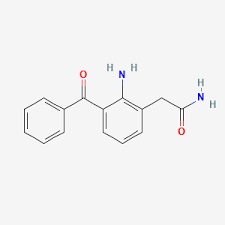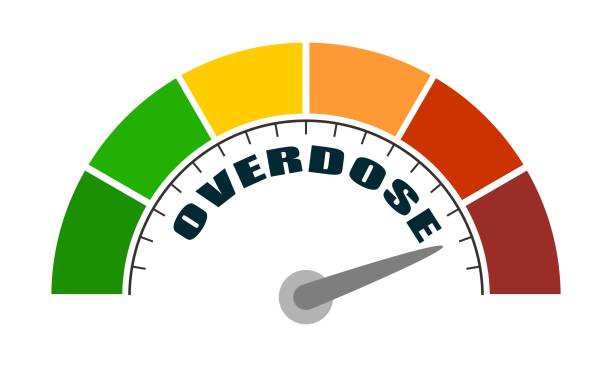Nepafenac Eye Drop
- Introduction
- Uses of Nepafenac Eye Drop
- Off-label Use
- How it Works
- Dosage and Administration
- Composition
- Storage
- Interaction
- Side Effects
- Common Side Effects
- Warning
- Contraindication
- Careful Administration
- Important Precautions
- Administration to the Elderly
- Administration to Pregnant Women and Nursing Mothers
- Administration to Children
- Overdosage
- Handling Precautions
Introduction
What is Nepafenac Eye Drop?
Nepafenac is a steroidal anti-inflammatory drug (NSAID) medication formulated explicitly for eye care. It is usually administered as eye drops, allowing it to enter the part of the eye and target the tissues inside to provide its therapeutic benefits. As an NSAID, its mechanism of action involves blocking an enzyme called cyclooxygenase, which plays a role in the production of prostaglandins.
Importance in ophthalmic care
The importance of Nepafenac in care cannot be overstated. Ophthalmic surgeons and doctors stress its effectiveness in reducing the chances of cystoid macular edema (CME) after cataract surgery, a complication that can severely affect vision. Additionally, by ensuring comfort within the eye and reducing inflammation, Nepafenac helps patients recover smoothly, leading to a better overall postoperative experience.
Uses of Nepafenac Eye Drop
Primary indications: Post-cataract surgery inflammation and pain
In the field of eye care, Nepafenac Eye Drops play a role in various situations1. One such scenario is after a cataract surgery when the eye tends to experience inflammation characterized by redness, swelling, and discomfort. Nepafenac effectively reduces these symptoms, ensuring the eye heals in an environment. Another essential benefit of Nepafenac is its ability to alleviate pain. It acts on the pathways associated with pain sensation, providing effective relief from postoperative discomfort commonly experienced after ocular procedures.
Benefits for patients undergoing ophthalmic procedures
Nepafenac Eye Drops provide a range of advantages for people going through procedures:
- Faster Healing: These eye drops help reduce inflammation and pain, leading to a quicker recovery.
- Reduced Risks: These eye drops ensure safer and more predictable surgical outcomes by minimizing the chances of complications like CME and other inflammations.
- Improved Comfort: Patients can expect a period with less pain and discomfort, which ultimately enhances their overall experience with the clinical care they receive.
Off-label Use
Exploration of non-standard applications
In medical treatments, there are instances where using medications in ways not intended initially can unexpectedly result in positive outcomes. Nepafenac Eye Drops, primarily used for reducing inflammation after cataract surgery, have been found to have benefits beyond their conventional usage. Some doctors have ventured into areas using this medication for purposes that regulatory authorities haven't explicitly approved.
Studies supporting off-label utilization
There have been well-conducted research studies that have shed light on the potential benefits of Nepafenac in nonstandard situations. For instance, regarding Diabetic Macular Edema, some studies suggest that Nepafenac could play a role in treating inflammation associated with this complication that arises from prolonged diabetes mellitus. Additionally, researchers have explored the inflammatory properties of this drug in the context of uveitis, an inflammatory condition affecting the eye's middle layer. Moreover Nepafenac has also been integrated into operative care for refractive surgeries to create an optimal healing environment. However, clinicians must exercise caution and rely on evidence before incorporating Nepafenac into off-label therapeutic regimens, as these indications highlight its versatility.
How it Works
Mechanism of action in the body
When we explore the complexities of how Nepafenac works, we can see its effects on eye tissues. Nepafenac is a prodrug that gets activated in the eye and turns into its form called amfenac. This transformation is crucial because amfenac blocks the cyclooxygenase enzymes (COX 1 and COX 2). Targeting these enzymes hinders the production of prostaglandins, which play a role in promoting inflammation.
The science behind its anti-inflammatory properties
Prostaglandins, which play a role in causing inflammation, are produced through the arachidonic acid pathway when our bodies experience injuries or undergo surgical procedures. Nepafenac effectively interrupts the prostaglandin cascade by targeting the cyclooxygenase junction, thereby reducing the response. Recognizing its inflammatory properties highlights its importance in adequately caring for eye-related conditions.
Dosage and Administration
Standard dosage recommendations
Although personalized treatment is considered essential in care, there are general dosage recommendations for Nepafenac Eye Drops2. After cataract surgery, it is typically advised to instill one drop into the eye three times a day starting the day before the surgery and continuing for two weeks after the operation. For indications, the dosage regimens may vary depending on the specific clinical situation and physician judgment.
Methods of administration
Nepafenac Eye Drops are designed for use on the eyes. To apply them, tilt your head back, pull down your eyelid to create a small pocket, and carefully put the drop in without letting the dropper touch your eye or anything else. After that, let go of your eyelid, gently close your look, and press the corner to help it absorb better.
Frequency and duration of use
The frequency of taking the medication mostly depends on the reason for its use, usually ranging from once to three times a day. The duration of treatment, however, will vary depending on the individual's condition, the seriousness of inflammation, and the doctor's assessment. Nevertheless, it is crucial to follow the recommended frequency and duration to achieve the possible results from the treatment and minimize any potential complications.
Composition
Ingredients of Nepafenac Eye Drop
The formulation of Nepafenac Eye Drops is carefully designed to include a variety of ingredients that work together effectively. These ingredients are carefully selected to complement each other and provide the desired medicinal benefits.

Active and inactive components
Understanding the composition of products requires recognizing the distinction between active and inactive ingredients. The active component in this solution is Nepafenac, a nonsteroidal anti-inflammatory drug (NSAID). It is primarily responsible for the effects of the medication, particularly its anti-inflammatory properties. Apart from the ingredients, these eye drops also contain various inactive components known as excipients. These include preservatives, stabilizers, buffering agents, and solvents. These ingredients ensure that the solution remains stable, sterile, and practical.
Storage
Optimal storage conditions
To ensure that Nepafenac Eye Drops remain effective and last for a time, it's essential to follow specific storage guidelines. Ideally, these drops should be kept at a temperature ranging from 15°C to 25°C. Protecting the bottle from sunlight and excessive heat is crucial to preserve its medicinal properties. Additionally, store it in a position away from children's reach.

Shelf life and expiration details
Pharmaceutical products always have a duration of effectiveness, after which they may not work as well. Nepafenac Eye Drops' recommended shelf life is usually between 24 to 36 months from the manufacturing date. The expiration date is clearly marked on the packaging, indicating when you should stop using the drops. It's essential not to use expired products as they may not provide the intended benefits and could cause adverse reactions.
Interaction
Common drug interactions to be aware of
It is crucial to consider the interactions between medications' effects on the body (pharmacodynamics) and how they are processed in the body (pharmacokinetics). In the case of Nepafenac Eye Drops, If used together with ocular steroids, there may be an increased risk of elevated pressure inside the eye or the development of cataracts at the back of the lens. Since Nepafenac is a nonsteroidal anti-inflammatory drug (NSAID), it can potentially enhance the effects of anticoagulant medications, leading to an increased risk of bleeding. Concurrent use of NSAIDs can heighten side effects or reduce their effectiveness for each drug. It is essential to disclose all medications you are currently taking to your physician to ensure that you achieve therapeutic results.
Impact of other ophthalmic solutions on Nepafenac's efficacy
When using multiple eye drops at a time, it is essential to consider the order in which they are applied. Waiting at least 5 minutes between applying different eye drops is generally recommended. This helps prevent dilution, which could reduce the effectiveness of Nepafenac. Additionally, other eye drops with a pH or thickness can affect how long Nepafenac stays in the eye, potentially changing its effects.
Side Effects
Overview of potential adverse reactions
Every time a therapeutic intervention is administered, it brings a range of beneficial and undesirable results. Although Nepafenac Eye Drops provide anti-inflammatory effects, they are not without the possibility of unwanted reactions. Understanding these side effects6, ranging from mild and temporary to severe and long-lasting, is crucial for patient care and management.

Differentiating between common and rare side effects
The world of side effects is vast, and not all side effects occur with the same frequency:
- Common Side Effects: These are experienced by many patients and are usually temporary, often improving with continued use or minor interventions.
- Rare Side Effects: These occur sporadically. Affects only a tiny fraction of users. Despite their occurrence, they can be more severe, requiring medical attention.
Distinguishing between these categories helps patients and doctors anticipate and promptly address any reactions.
Common Side Effects
Detailed exploration of frequently observed side effects
Like any other eye drops used in ophthalmology, Nepafenac Eye Drops can cause a range of side effects that are commonly seen in clinical practice:
- Eye Discomfort: Some patients may feel stinging or burning upon applying the drops.
- Redness of the Conjunctiva: The white part of the eye may temporarily appear reddish due to dilated blood vessels.
- Momentary Blurred Vision: After using the drops, vision may briefly become cloudy. It usually clears up on its own.
- Itching Sensation: Patients may experience an itching feeling on the surface of their eyes, which might lead them to rub their eyes.
These side effects are typical. This should be considered when using Nepafenac Eye Drops.
Management and mitigation measures
Most of the side effects are temporary and can be easily managed. Take a short break from visually demanding tasks if you experience mild eye discomfort. Use tears to relieve dryness or itching by providing lubrication. If side effects persist or worsen, it's essential to consult a professional. For effective treatment, an informed patient who's aware of potential side effects and how to mitigate them is crucial.
Warning
Potential risks associated with misuse
Any deviation from the recommended treatment plan, regarding the amount or duration, increases the chances of experiencing complications. Taking less than prescribed can amplify side effects while taking less than prescribed can hinder the effectiveness of the treatment. Additionally, medications that are not recommended together can lead to interactions and reactions.

Safety guidelines for optimal outcomes
To fully maximize the benefits of Nepafenac Eye Drops, patients must follow these safety guidelines:
- Dosage Adherence: Sticking to the prescribed dosage without any deviations is essential.
- Avoiding Overuse: It can be dangerous to make any adjustments to the dosage on your own. It's best to avoid doing so.
- Proper Storage: store the eye drops according to the recommended conditions. This will help maintain their effectiveness and stability.
- Medical History: To prevent any interactions with other medications, providing a detailed account of your medical history, including any current medications you may be taking, is essential. By adhering to these guidelines, you can ensure that Nepafenac Eye Drops are used safely and effectively.
Contraindication
Situations and conditions where use is not advised
Although Nepafenac Eye Drops are commonly used in care, caution should be exercised in certain situations and with certain underlying conditions. In the formulation, these drops should not be used in patients who have known hypersensitivity reactions to Nepafenac or any of the ingredients. Additionally, if there are ocular infections, corneal dystrophies, or certain types of glaucoma, it may not be advisable to use this medication.
Specific patient groups to be cautious with
There are groups of patients that require thorough evaluation before starting treatment with Nepafenac:
- Pediatric Patients: We have information about the safety of Nepafenac in younger patients compared to adults. It is crucial to be vigilant when prescribing it to children.
- Pregnant and Breastfeeding Women: Since we have limited data on how Nepafenac affects babies or if it is excreted in breast milk, we must exercise caution when considering its use during pregnancy or while breastfeeding.
- Patients with Systemic Conditions: Individuals with arthritis or diabetes may have an increased risk when taking Nepafenac. Close monitoring is necessary for their safety. It is essential to consider each patient's unique medical history to ensure safe and effective therapy.
Careful Administration
Situations necessitating special attention
Attention to detail is essential when using Nepafenac or any other medication. This is especially true in situations like after ophthalmic surgeries when the eyes are more vulnerable and precise administration of drops is crucial. If you wear contact lenses, remember to remove them before applying the drops because they can interfere with distribution. Additionally, if you're using eye medications as part of your treatment, it's essential to apply them in the correct order for optimal effectiveness. Being aware of these scenarios can significantly enhance the therapeutic benefits.
Tips for safe application
To make sure that Nepafenac Eye Drops are used safely and effectively, it is essential to follow these guidelines:
- Clean Hands: Start by washing your hands. This is the most crucial step in preventing any potential contamination.
- Applicator Care: Ensure the dropper tip remains untouched and uncontaminated to maintain sterility.
- Proper Tilting: To make the process smoother, tilt your head backward when instilling the eye drops.
- Precise Application: Gently pull down your eyelid to create a small pocket, then carefully administer the drop into this pocket. This will help with absorption. Reduce any chance of spillage.
By following these administration principles, you can maximize Nepafenac Eye Drops' effectiveness while ensuring your safety.
Important Precautions
Best practices for application
To ensure the use of Nepafenac Eye Drops, it is essential to follow a set of recommended practices:
- Consistent Timing: It is recommended to administer the drops simultaneously every day to maintain a consistent routine.
- Avoid touching: To prevent contamination, avoiding touching the dropper tip is essential.
- Lid Closure: After applying the drops, gently close your eyelids to promote absorption and minimize any potential absorption into the rest of your body.
- Follow-up: Regular visits to an ophthalmologist can provide insights into how well the medication works and whether there are any possible side effects.
By incorporating these practices into your routine, you can ensure both safety and effectiveness when using Nepafenac Eye Drops.
What to avoid when using the drops
To enhance the effectiveness of the treatment plan, it is advisable to avoid practices such as:
- Rubbing your eyes vigorously after applying eye drops can cause the medication to move and worsen irritation.
- Engaging in demanding tasks immediately after using eye drops can lead to blurred vision and strain on the eyes.
- It is essential to prioritize safety by not using eye drops that have expired. Regularly checking the expiration date is a must.
Administration to the Elderly
Special considerations for senior patients
As individuals grow older, their bodily functions change, requiring a careful adjustment of treatment approaches. Elderly patients often experience characteristics in their eyes such as decreased tear production, reduced sensitivity in the cornea, and alterations in ocular metabolism. Thus, assessing each person's needs is crucial when considering Nepafenac Eye Drops within this particular group.

Dosage and frequency adjustments, if any
While the general dosage recommendations for Nepafenac remain mostly consistent across age groups, it is essential to consider potential adjustments for geriatric patients. Here are some key points to keep in mind:
- Metabolic Function: As elderly individuals may experience delayed metabolic and excretory functions, it might be necessary to modify the dosage.
- Concurrent Medications: Elderly patients often take medications simultaneously (polypharmacy), so it is crucial to assess and avoid any potentially harmful interactions carefully.
- Health: Conditions such as age-related macular degeneration or dry eyes should be considered when considering the frequency of medication administration.
Taking an approach that involves both geriatricians and ophthalmologists can provide valuable guidance in navigating these complex therapeutic considerations.
Administration to Pregnant Women and Nursing Mothers
Safety profile during pregnancy
During pregnancy, many physical changes occur. Although there is information on the safety of Nepafenac, there are not many studies specifically looking at its use during pregnancy. Initial findings indicate that it is absorbed minimally into the body. It is essential to be cautious and prioritize safety.

Risks and considerations for lactating women
Breastfeeding is a time for bonding between a mother and her baby, so it's crucial to evaluate medication use carefully. Although there is no evidence indicating that Nepafenac passes into breast milk, certain factors must be taken into account without negotiation:
- Considering the benefits and risks: It's essential to carefully consider whether the benefits of treatment outweigh any potential exposure to the infant.
- Exploring options: It might be worth exploring nonpharmacological approaches or considering other medications that have been proven safe during breastfeeding.
Discussions with healthcare professionals can help find a balance between therapeutic needs and ensuring the healthy being of both mother and baby during lactation.
Administration to Children
Age-specific guidelines for pediatric use
The unique nature of the developing eyes in children necessitates the establishment of guidelines tailored to their age groups. Although there is evidence supporting the safety and effectiveness of Nepafenac in adults, its use in children is still relatively new. Consequently, before starting treatment, conducting assessments based on protocols designed specifically for pediatric patients is essential.

Adjustments and precautions for younger patients
Regarding children, we need to consider their physical and developmental differences. This means we should consider giving them doses of medication due to their smaller size and different metabolisms. It's also essential to monitor them after giving the drug because they are more prone to experiencing side effects. Educating caregivers on how to administer the medication and ensuring they follow through with it can significantly improve the effectiveness of the treatment. We can create a safe and effective approach to treating young patients' eye conditions by involving ophthalmologists.
Overdosage
Signs of overdose and potential consequences
Although uncommon, experiencing an overdose of Nepafenac Eye Drops can be an emergency. Patients may exhibit increased eye irritation, excessive tearing, and visual difficulties. In some cases, these symptoms can even affect the overall balance of the body's internal systems.

Emergency procedures and immediate steps
If you suspect an overdose, seeking advice from a healthcare professional or going to the emergency room without delay is crucial. To reduce drug exposure, gently rinse the eye with sterile water or saline solution. Providing care, such as ensuring the patient's comfort, monitoring vital signs, and starting symptomatic treatment, can play a crucial role. Taking appropriate actions can significantly lessen the impact of an overdose.
Handling Precautions
Guidelines for safe handling and disposal
Maintaining the effectiveness of Nepafenac Eye Drops relies on safeguarding their integrity. It is crucial to follow these guidelines:
- Dispensation: Before handling the drops, it is essential to clean your hands to prevent any introduction of contaminants thoroughly.
- Storage Compliance: To ensure that the drops retain their therapeutic potential, storing them according to the manufacturer's recommended conditions is essential.
- Disposal Protocols: When dealing with unused drops, it is necessary to dispose of them per local pharmaceutical waste guidelines to avoid any negative impact on the environment.
Measures to prevent contamination or spillage
It is crucial to prioritize the cleanliness and safety of the dropper and the solution. By following these precautions, we can reduce the chances of contamination and spills:
- Keep the applicator intact: Ensure the dropper tip does not come into contact with surfaces like your hands or eyes.
- Securely close the bottle cap: After each use, ensure the lid is tightly sealed to avoid spills and maintain sterility.
- Optimal tilting: Hold the bottle in a position when administering drops to ensure precise dispensation without wastage.




















